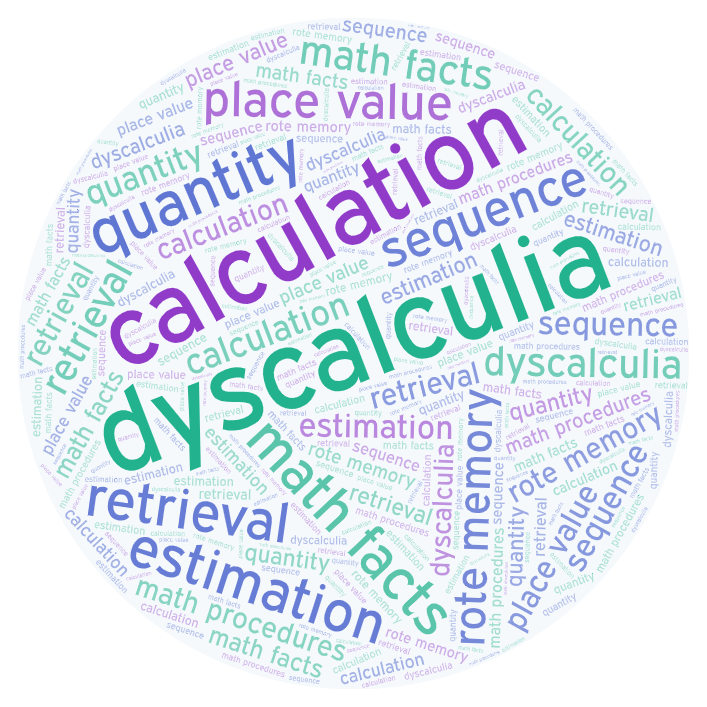It’s often told to parents that a “Five Finger Rule” can help you choose whether a book is at the right reading level for a student. The rule states that if a student misses five or more words, it may be too hard, no words and it might be too easy, and three words and it’s ‘just right’. The problem for dyslexic students is that the “Five Finger Rule” may prevent them accessing print information at their intellectual level and if reading aloud is the guide for the rule, then it’s possible they may never be granted access to higher level books even if they are university professors! In fact, pioneering work by Rosalie Fink (see research paper below for Premium members), showed that accomplished […]
Teaching Chemistry to Students with Dyslexia [Premium]
Although High School Chemistry is required for many of the top 4 year liberal arts colleges and college Chemistry is a necessary requirement for many majors and careers that many dyslexic students excel in like engineering or medicine, there is a surprising lack of resources available to students having their first encounter with chemistry – and that may make things tricky, especially if they’re also juggling a full load of classes. For Premium subscribers, here are a few tips and strategies for surviving and even thriving at chemistry. Chemistry can be a field that dyslexics do extremely well at because they can visualize, rotating molecules in space, and picture their interactions and energy transformations. The main challenge is often at the beginning – when all the […]
[Premium] What to Do If a Reading Curriculum Doesn’t Work
It happens to everybody. You research a curriculum thoroughly or it gets through several levels of a review and then you put it into action and… it just doesn’t connect. What do you do? There are several common reasons why a curriculum doesn’t connect with a particular student – and so some trial and error and modification need to take place. The most common reasons that certain curricula fail for a particular student include: 1. Going Too Fast Because there can be difficulty registering information accurately (sounds, letters, words), a student may need to slow the pace down considerably if the lessons aren’t sinking in. It may seem counterintuitive if you feel a student is slipping farther behind, but reducing work and simplifying […]
[Premium] Math Journal Club: Strategic Instruction for Fractions
This past week, researchers published an interesting study that suggested that students should receive explicit instructions about why certain approaches are chosen for certain types of math programs. As it turns out, studies of strategic math instruction seems to especially benefit students with “learning disabilities.” This approach should be valuable to students with dyslexia because rather than having to memorize multiple steps of math problem solving, they learn to recognize the different categories of problems that are presented giving them the opportunity to choose the approach that is best for them. Rather than presenting with a large quantity of math problems that they are left to solve on their own, students are first divided into groups depending on how they initially choose to solve a problem. Rather […]
Tips for Supporting a Student with Dyscalculia – Steve Chinn
Thanks Steve Chinn of Maths Explained for this post. Steve also has several books with practical strategies to help with math and dyscalculia. There's The Trouble with Maths and an eagerly awaited Mathematics for Dyslexics and Dyscalculics - 4th Edition which is now...
Math Tips: Teaching Place Value [Premium]
“Many problems that appear in later numeracy can be traced back to a lack of understanding of place value. It therefore needs careful attention, particularly when zeros are involved.” – Chinn & Ashcroft, Mathematics for Dyslexics Place value may be covered quite quickly in a student’s first math lessons, but for the dyslexic student, who likely will have trouble with multi-stepped procedures and working memory overload, the problem will spread beyond borrowing and regrouping, into multiplication, decimals, and algebra. At left, from Diane Montgomery’s Teaching Gifted Children with Special Educational Needs, see examples of systematic place value errors. 83 +49 1212 #1: Carry-over mistake in addition. 46 -39 13 #2. Borrowing – Regrouping error in subtraction. 43 x 5 = 205 #3. Carryover mistake in […]
The Beauty of Guessing
I've been away from the blog a bit because we're finishing articles for our Premium magazine this month and I've been buried in articles about visual spatial learning and preferred learning strategies of boys. Now I know that it's pretty common for the practice of...
Why Students Hate to Write – A High School Teacher’s Reflections [Premium]
“When students say that they do not like to write I ask them why. They typically respond with, “Because I hate it” … after incidents like this I cannot help but sit back and ask myself why I think they do not like to write…” One young teacher of high school students put her own assumptions to the test and her teaching has changed forever. Students with dyslexia often hate to write because there is such a huge gulf between the ideas in their heads and what they can get down on paper. At a recent talk to some student teachers, I asked the room what they thought they could do for a high school student who was very slow and having trouble getting their […]
Dyslexia in the General Classroom – YOU DECIDE : 2nd Grader and Reading [Premium]
YOU are a 2nd-grade teacher in a busy public school classroom. You just learned that Teddy, a student in your class has been tested and found to be dyslexic. Teddy already gets pull-out instruction with multisensory learning to help him read. What can you do to help Teddy make more progress in reading? ************ 1. Alliteration, Rhyming, and Singing – All students can benefit by alliteration and rhyming. New readers will find the books easier to read and reinforcing in terms of the patterns of sounds and printed word families, but good readers can also use alliteration and rhyming as a prompt for poetry and humorous writing. Here is a nice graphic organizer for alliteration: (click here for more). This teacher created alliteration spinners to […]
Shakespeare and Dyslexia – Making Words Physical [Premium]
Today is National Shakespeare Day, and dyslexia and Shakespeare have been on our minds. We recently mentioned that Lloyd Everitt (yes, he’s dyslexic) is the youngest actor to play Othello at Shakespeare’s own Globe Theater. But we’ve also been thinking about Shakespeare recently because, on our trip down to California, we had the pleasure of stopping by the Oregon Shakespeare Company’s Rebecca Carey, the head of Voice and Text. Rebecca has an accomplished career that includes acting herself as well as teaching and consultant roles with the Royal Academy of Dramatic Art, Oxford School of Drama, Broadway, and American Repertory Theatre. Rebecca is also co-author (with her husband, David Carey) of The Shakespeare Workbook and Video, a brilliant practical course for actors that includes such topics […]
This is Your Brain on Phonics – fMRI and Dyslexia [Premium Subscription]
One of the greatest neuromyths about dyslexia is that it’s just about reading. Kudos to the Gabrieli lab (and many others) who are unraveling the differences that exist between dyslexic and non-dyslexic children because the science can inform us about what we may need to do as teachers and tutors. In the following article, we’ll share recent brain research that shows that dyslexic children ‘hear’ or processing sounds differently. Instead of activating a left hemispheric area, they activate the right temporoparietal cortex, a part of the brain important for multisensory integration and imitation. ** To read more, log into your Premium account or become a Premium Subscriber here or. Thank you for your support!

![Choosing the Right Reading Level Books for Students with Dyslexia [Premium]](https://www.dyslexicadvantage.org/wp-content/uploads/2016/10/reading-bulb-our-shutterstock-scaled.jpg)
![Teaching Chemistry to Students with Dyslexia [Premium]](https://www.dyslexicadvantage.org/wp-content/uploads/2016/09/Screen-Shot-2019-09-09-at-10.55.40-AM.jpg)
![[Premium] What to Do If a Reading Curriculum Doesn’t Work](https://www.dyslexicadvantage.org/wp-content/uploads/2016/09/our-shutterstock-puzzle.jpg)
![[Premium] Math Journal Club: Strategic Instruction for Fractions](https://www.dyslexicadvantage.org/wp-content/uploads/2016/08/maths-our-shutterstock-scaled.jpg)

![Math Tips: Teaching Place Value [Premium]](https://www.dyslexicadvantage.org/wp-content/uploads/2016/07/Screen-Shot-2019-09-15-at-4.51.59-PM.jpg)

![Why Students Hate to Write – A High School Teacher’s Reflections [Premium]](https://www.dyslexicadvantage.org/wp-content/uploads/2016/05/Screen-Shot-2019-09-17-at-9.04.00-AM.jpg)
![Dyslexia in the General Classroom – YOU DECIDE : 2nd Grader and Reading [Premium]](https://www.dyslexicadvantage.org/wp-content/uploads/2016/05/2nd-grade-our-shutterstock.jpg)
![Shakespeare and Dyslexia – Making Words Physical [Premium]](https://www.dyslexicadvantage.org/wp-content/uploads/2016/04/shakepeare-pixabay.jpg)
![This is Your Brain on Phonics – fMRI and Dyslexia [Premium Subscription]](https://www.dyslexicadvantage.org/wp-content/uploads/2016/01/shutterstock_229039786.jpg)













